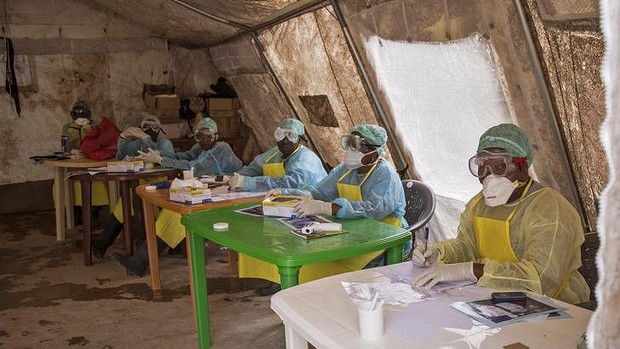
Health workers await patients to screen against the deadly Ebola virus at the Kenema Government Hospital in Sierra Leone on Saturday. Photo: AP
Patient Zero in the Ebola outbreak, researchers suspect, was a two-year-old boy who died on December 6, just a few days after falling ill in a village in Gueckedou, in south-eastern Guinea. Bordering Sierra Leone and Liberia, Gueckedou is at the intersection of three nations, where the disease found an easy entry point to the region.
A week later, it killed the boy’s mother, then his three-year-old sister, then his grandmother. All had fever, vomiting and diarrhoea, but no one knew what had sickened them.
Two mourners at the grandmother’s funeral took the virus home to their village. A health worker carried it to still another, where he died, as did his doctor. They both infected relatives from other towns. By the time Ebola was recognised, in March, dozens of people had died in eight Guinean communities, and suspected cases were popping up in Liberia and Sierra Leone – three of the world’s poorest countries, recovering from years of political dysfunction and civil war.

The image of Liberia President Ellen Johnson Sirleaf (left) appears on a banner warning people about the Ebola virus in the city of Monrovia, Liberia, on Friday. Photo: AP
In Gueckedou, where it all began, “the feeling was fright,” said Dr Kalissa N’fansoumane, the local hospital director. He had to persuade his employees to come to work.
